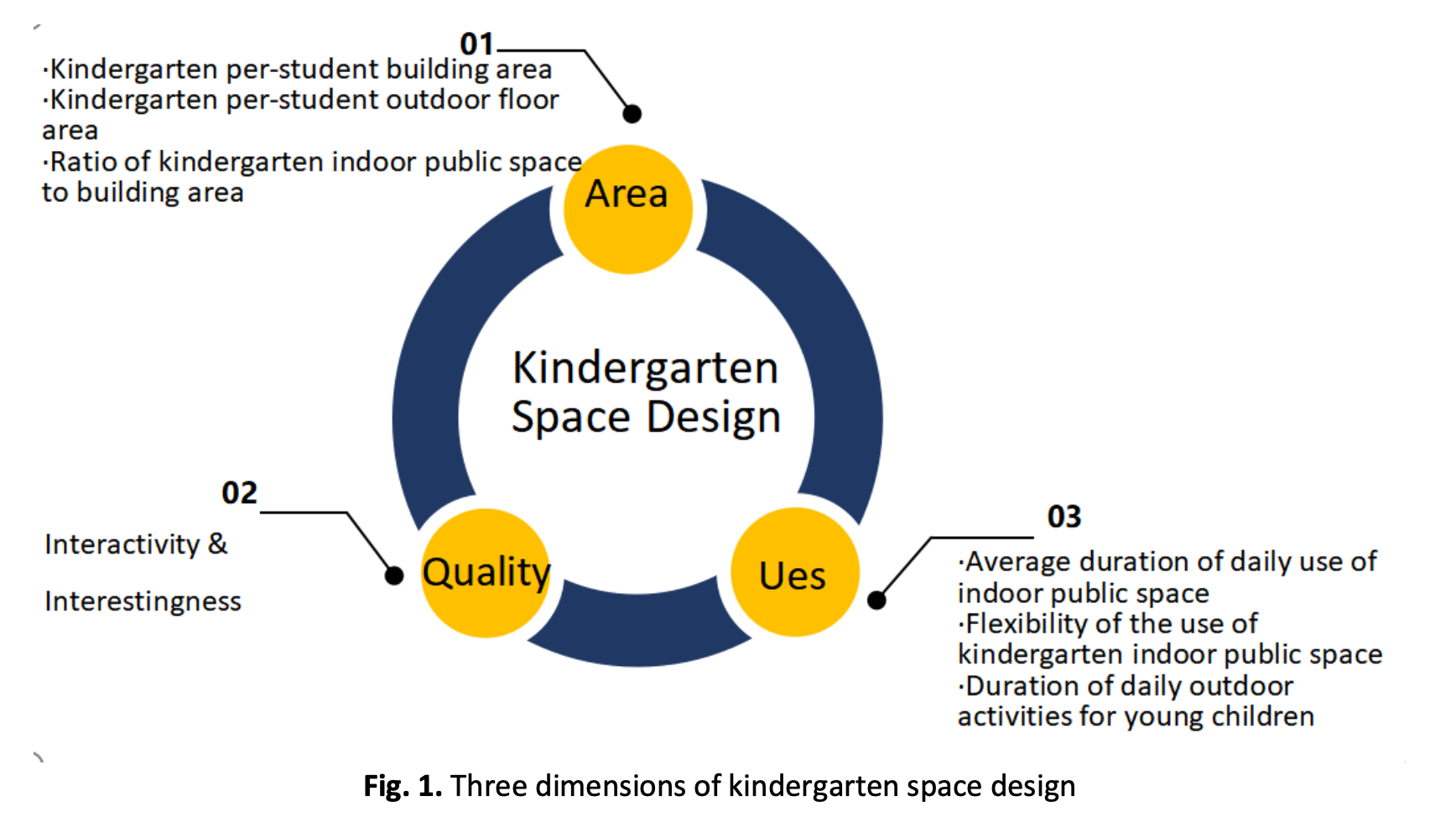Influence of Kindergarten Space Design on Development Quotient of Young Children
DOI:
https://doi.org/10.37934/araset.32.3.534549Keywords:
Development quotient of young children, Five functional areas of young children’s development, Kindergarten space design, Open public spaceAbstract
The design of kindergarten spaces significantly impacts young children’s physical and mental development. This research considers the influence of three dimensions of kindergarten space design, specific area, quality and use, on the development quotient (DQ) of young children. It considers this through regression and correlation analysis applied to survey data related to the spatial design of the three kindergartens in the aforementioned three dimensions, along with the DQ test scores of 270 young children. The results reveal a significant positive correlation between the three dimensions (area, quality and use) of kindergarten space design and young children’s DQ. With regard to the dependent variable’s influence on the five areas of young children’s DQ, dependent variables had the largest influence on social behaviour, and then on language, gross motor and adaptability; however, they had no significant influence on fine motor. And finally, while the influence of these three dimensions on the DQ of male children was found to slightly exceed their impact on female children’s DQ, this influence was not impacted by monthly age changes. In order to ensure the spatial environment positively affects young children’s development, the results attribute particular significance to the index of the kindergarten indoor and outdoor per-student area; the extent to which space design is interesting; and the potential for diversification and the duration of use to evolve.
Downloads





























